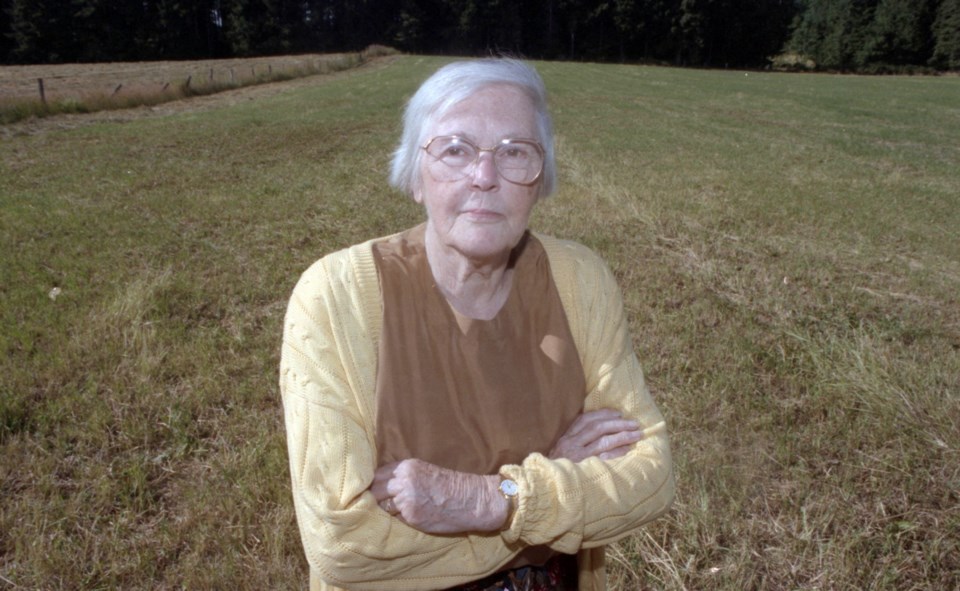It is a privilege, even over a span of seven decades, to have met someone like Dr. Frances Oldham Kelsey, the Canadian scientist who died last week at the age of 101.
As a one-time musician in the 1960s, I had met a few rising stars, fading stars and wannabe celebrities.
Later in life as an educator, I met a few ministers of state, and even some academic luminaries.
Fame and fragile celebrity are one thing, but to have met a person who changed our world and made it a better place for untold hundreds of thousands, maybe millions, of people — that’s rare and for me happened only once in my life.
Kelsey accomplished that simply through the integrity of her remarkable research, which distinguished her contribution to medical history.
In the 1990s, the school district in which I worked, Cowichan School District, had received government permission to build a new secondary school — a rare opportunity that the trustees of the day were determined would reflect the best of what we knew about how children learn and what skills kids would need as they faced post-secondary school and, eventually, employment.
But what to name such a school? A name was needed that would embody our hopes for education and for the kids who would learn there.
The community was asked for suggestions.
One contributor suggested Frances Oldham Kelsey, a name of which we knew nothing at all.
Research at the University of Victoria library followed and we were astounded to learn that, despite our woeful ignorance in Canada about Kelsey, she had been born in 1914 and had grown up in Cobble Hill and later had moved on to international prominence, under the local and Canadian media radar.
As a woman of science and one whose sense of personal and scientific integrity had resisted enormous corporate pressure to conceal her findings about thalidomide in the ’60s, Kelsey had been given the President’s Award for Distinguished Federal Civilian Service from the hand of president John F. Kennedy.
No contest in terms of suitability for a school name.
A flurry of phone calls finally located Kelsey, who, now in her 80s, was living in Maryland and was still leading a research lab at the Federal Food and Drug Administration in Washington, D.C.
Would she agree to having a new school named after her? A long pause followed that caused me some anxiety, and then a clear response came across the line: “I don’t believe I have ever been offered such a great honour. Thank you, and could I come to the official opening of the school when it happens?”
So Kelsey came to the opening of the school in 1995, and the kids, who by now understood who she was, treated her like a rock star.
It was moving to see this small, physically unprepossessing woman surrounded by excited teenagers who knew now, maybe for the first time, they were in the presence of greatness.
As she toured the school, walking with a slight limp because of a white-water rafting accident the day before, this 81-year-old scientist, by now being spoken of in the same terms as Sir Frederick Banting and Charles Best, chuckled with undisguised glee at the way labs had been set up and asked how many girls were considering a science career.
At an assembly, she spoke to the kids and the adults about the importance of truth, perseverance and integrity as virtues in any career the kids might choose.
Over the years, Kelsey stayed in contact with “her school” and, by the simple retelling of her story by Kelsey teachers, became a source of inspiration to many young grads who followed in her footsteps.
She certainly inspired the rest of us adults.
Geoff Johnson is a retired superintendent of schools.



